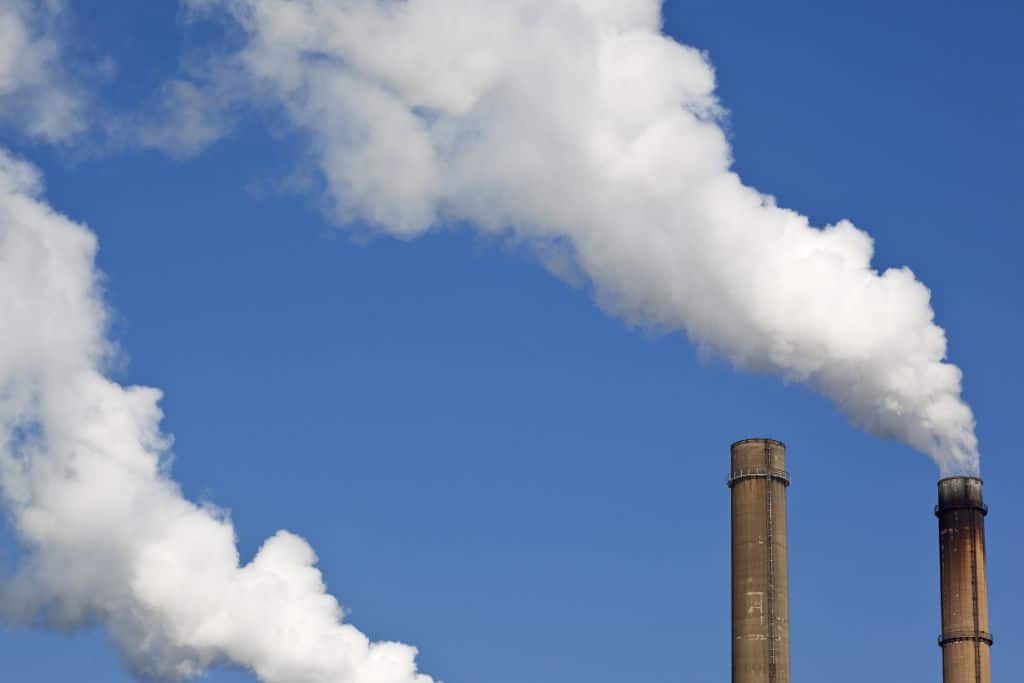Limiting global temperature below 2C requires ambition and drastic actions. When it comes to technological advances to decreasing GHG emissions and removing CO2 from the atmosphere, several processes, methods, and a combination of technological solutions are being deployed and tested around the world. Among them, advances such as Bioenergy with Carbon Capture and Storage (BECCS) are increasingly framed as game-changing Negative Emission Technologies (NET). But is this technology a silver bullet in the race to decarbonisation? To answer this and other questions, this article will explore the concept of BECCS, some of its pros and cons, and its role in the transition toward a low-carbon economy.
—
What Are NETs?
Before diving into BECCS let us briefly define NETs. In essence, NETs, or negative emissions technologies, refer to the collection of technologies that could potentially remove and sequester CO2 from the atmosphere. NETs are increasingly important and they are also known as technologies that can enhance natural carbon sinks because of their influence in affecting the earth and water ecosystems.
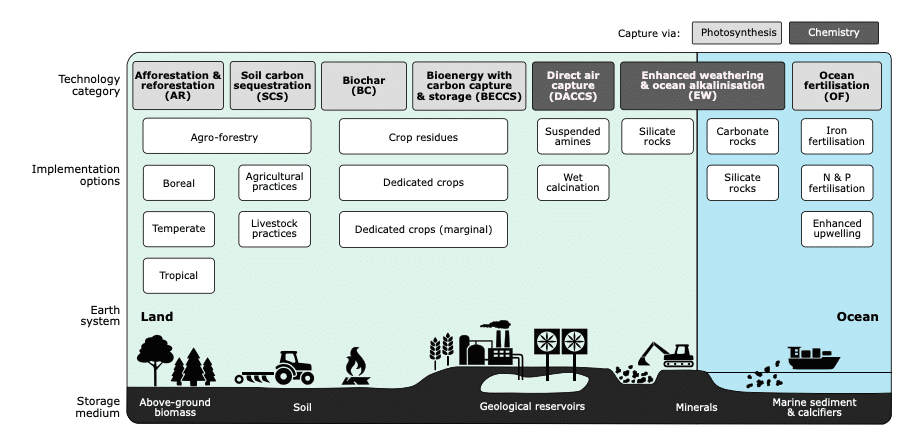
Fig 1. NET Technologies. Image by: Jan C Minx et. al 2018.
NETs include well-known technology categories like Afforestation and Reforestation, Soil Carbon Sequestration, Biochar, Direct Air Capture, and even Ocean Fertilisation (see Fig 1).
NETs are increasingly seen as the most important options to halt climate change below 2C and BECCS, a combination of bioenergy and carbon capture technologies, is part of this group. Global institutions like the Intergovernmental Panel on Climate Change (IPCC) highlight the role of BECCS as an important net-negative emission solution being used in different climate change mitigation scenarios.
However, despite their potential for specific solutions, each option represents also challenges, and not a particular NET alone can sustainably keep warming below the desired threshold. But it is likely that a combination of NETs could significantly contribute to reaching climate goals. This, of course, could be possible by deploying cost-effective solutions where needed at the scale required. Furthermore, maintaining operational conditions that do not imply environmental and social trade-offs.
You might also like: 3 Carbon Capture Technologies We Must Scale Up to Meet Net Zero
What Is BECCS?
Now that we know the basics of NETs we can understand much better what BECCS is and explore why this solution has a huge potential in achieving net zero or low carbon energy supply.
In general, Bioenergy with Carbon Capture and Storage, or in short, Bio-CCS or BECCS, is defined as processes in which energy is produced from biomass and then transported to geological storages after being retaken with the aid of carbon capture technologies.
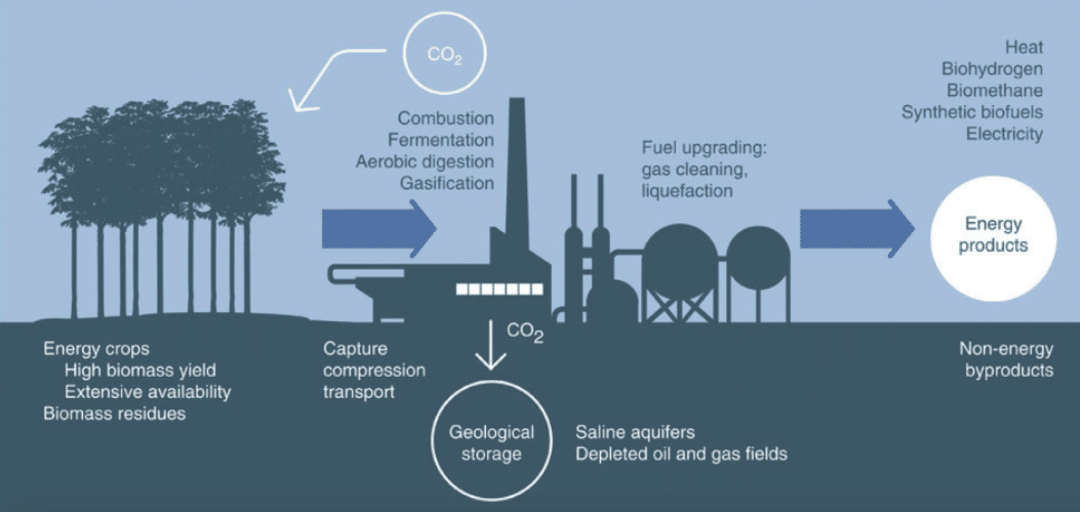
Fig 2. Concept of BECCS. Image by: Jasmin Kemper, 2018.
It involves any energy pathway where CO2 is captured from a biogenic source and permanently stored in some sort of reservoir. This means that carbon that is bound in biomass through photosynthesis becomes valuable for energy production, it is then transformed to energy through combustion, fermentation, or gasification, and the CO2 that results during such processes is prevented to flow back into the atmosphere by using carbon capture and storage technologies (CCS). Under compression, the CO2 is placed in geological storages that include saline aquifers or depleted oil and gas fields (see Fig 2). This process, under ideal circumstances, is a net-zero removal scenario.
What Role Does BECCS Play in a Low-Carbon Economy?
Chapter 6 of the 5th Assessment Report (AR5) of the Intergovernmental Panel on Climate Change (IPCC) highlights the fact that large-scale changes in global and national energy systems are essential to reduce atmospheric CO2 levels drastically in the future.
Under this urgency framework, 116 scenarios have been modeled to forecast the possible impact of 40 different solutions. The scenarios are consistent with a >66% probability of limiting warming below 2C, considering atmospheric concentration levels between 430-480 ppm CO2eq in 2100.
There are several options. However, according to AR5, most mitigation scenarios become feasible when the deployment of BECCS reaches a substantial proportion across the world. In general, the models are approximating, but they suggest that the amount of BECCS required to meet the 2C criteria should range from 0 EJ yr–1 to 561 EJ yr–1 in 2100 (see Fig 3).
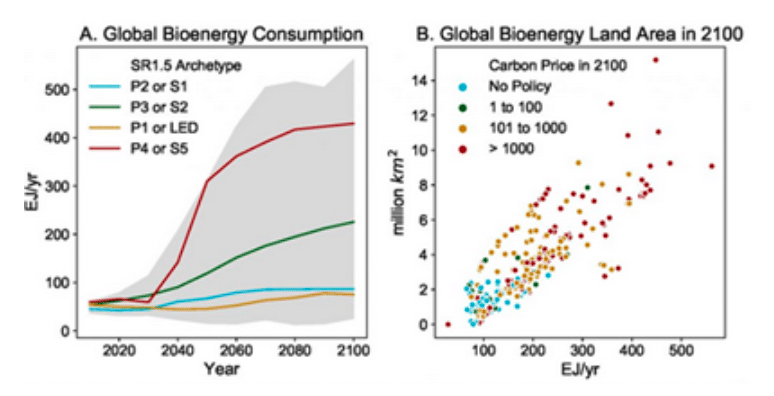
Fig 3. Integrated Assessment Modelling scenarios. Image by: IPCC (AR5).
Now, what exactly does this mean? There are several estimations to explain the role of BECCS to achieve needed negative emissions.
Two examples are worth mentioning:
- Assuming the use of high-productive energy crops as a feedstock where BECCS can potentially deliver 3.3 Gt Ceq yr−1 of negative emissions would require a land area of approximately 380–700 Mha in 2100. This emissions removal is equivalent to 21% of total current human appropriated net primary productivity (NPP) (15.6 Gt C yr−1 in 2000), or 4% of total global potential NPP.
- On the other hand, areas for AR (IPCC) that are calculated assuming a mean carbon uptake over the growth period of 3.4 t Ceq ha−1 yr−1 give a land area of ~320 and ~970 Mha corresponding to 1.1 and 3.3 Gt C yr−1 removed in 2100, respectively.
This means, in simple words, that a sustainable deployment of BECCS of around 3.3 Gt C yr−1 is needed to remain within the recommended <2C target (430–480 ppm CO2eq) by using an approximate land area in the range of 320 to 970 Mha.
Considerations for BECCS Solutions
So far so good. But looking into the numbers, this implies a huge amount of land for the production of biomass. For instance, the total agricultural land area in 2000 was ~4,960 Mha, with an area of arable and permanent crops of ~1,520 Mha, so the area for BECCS (380–700 Mha) represents 7-25% of current available agricultural land.
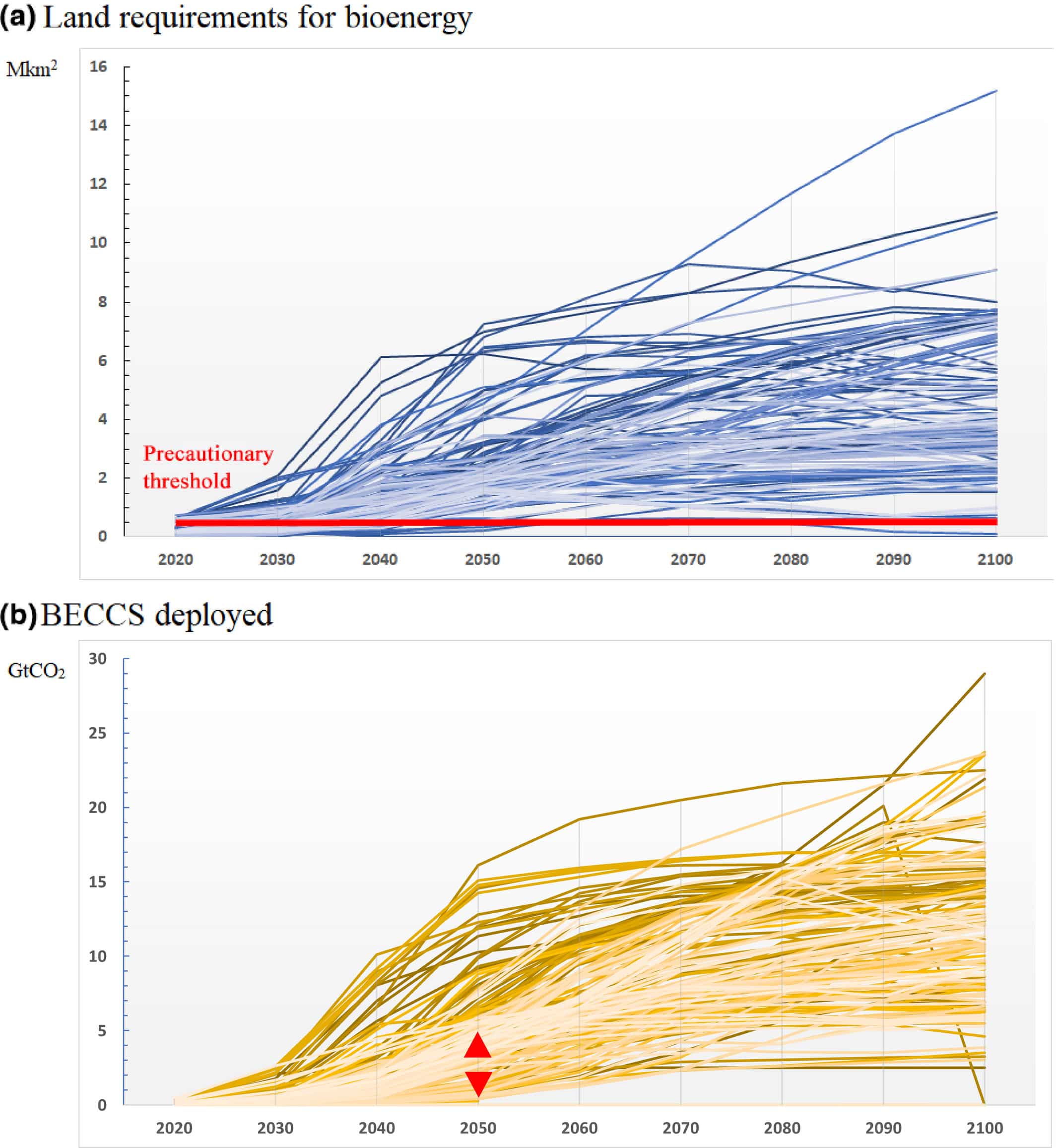
Fig 4. Land demand for bioenergy crops and bioenergy with carbon capture storage (BECCS) sequestration in 2C and 1.5C mitigation scenarios. Image by: Creuzig et al. 2021.
As explained by Smith et al, “land use intensity of BECCS is quite high, with values ranging from ~1–1.7 ha t−1 Ceq yr−1 where forest residues are used as the BE feedstock, ~0.6 ha t−1 Ceq yr−1 for agricultural residues, and 0.1–0.4 ha t−1 Ceq yr−1 when purpose-grown energy crops are used. (See Fig 4).
Consequently, the use of BECCS on large areas of productive land is expected to impact the amount of land available for food or other bioenergy production, as well as ecosystem services, resulting also in immense pressure on water resources likely impacting biodiversity.
Simple Economics
In economical terms, studies have shown that AR5 scenarios that assume a carbon tax of around US$100/ tCO₂ are sufficient to facilitate large-scale BECCS project deployment.
By 2030, for example, US$36.2 and 29.4 billion yr−1, respectively, represent the average investment estimated for scaling up BECCS production technologies worldwide. Action to expand BECCS capability is on the way.
More than 20 projects are in development worldwide and such projects are receiving investment. The IEA indicates that in 2022, the European Innovation Fund included BECCS projects to expand the capability of this technology. The BECCS@STHLM waste-to-energy project in Sweden (US$ 675 million), and the K6 Lumbres cement plant in France (US$ 285 million) are two examples of large-scale BECCS.
Moving Forward
Not everything is bad news. After all, BECCS has a huge potential to meet climate targets, its success depends on how land management takes place and how regulatory frameworks are created, strengthened, and implemented so the use of land for such technologies does not overshoot planetary boundaries. Bear in mind that food production remains key in a world where the population keeps on rising. Likewise, monitoring, reporting, and very strong verification processes are needed across value chains because they are indispensable to verifying the quality of removals and how biomass is being produced.
Takeaway
BECCS has an important role in supporting the efforts to limit global temperature below 2C. However, it is not the only solution we have and should not be deployed as a unique pathway due to its immense need for water and cropland.
Although the costs of implementation seem to be viable, the solution should have limitations as its expansion might cause investment conflicts that mainly focus the money on technologies such as BECCS. Consideration can be given to a mix of broader technologies. Interestingly, BECCS is one of the many options to alleviate the impacts of producing unsustainable energy and can generate a positive socio-economical impact when the right conditions are put in place under specific regional considerations.
You might also like: The Feasibility and Future of Carbon Capture and Storage Technology








